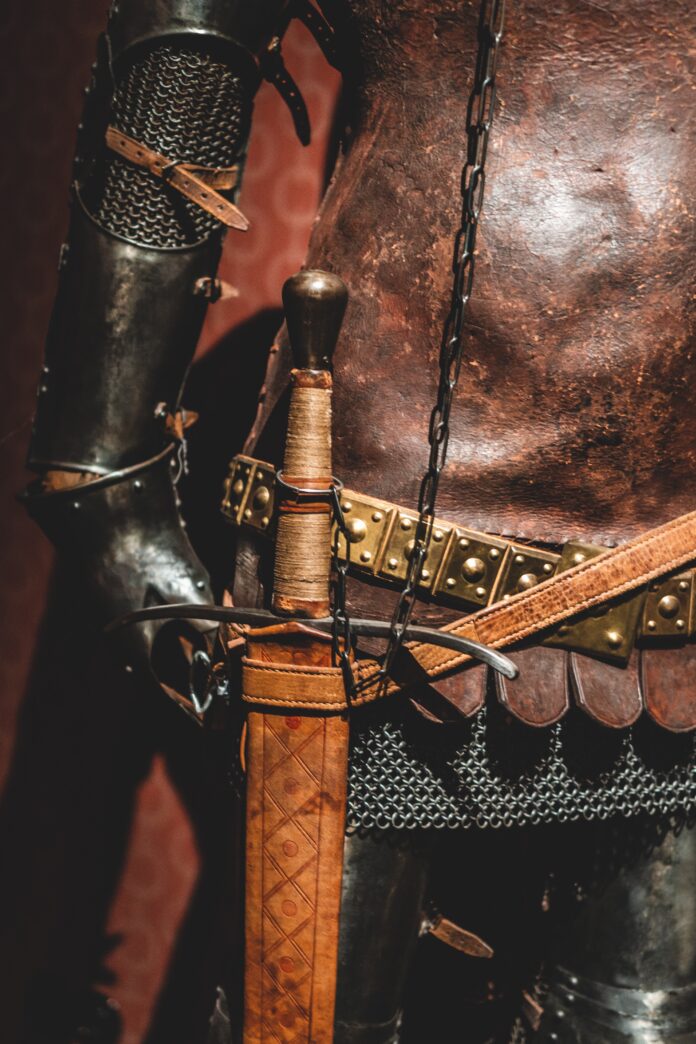Caliburn is a term that has multiple meanings and references across various fields. In Arthurian legend, Caliburn is the original name for King Arthur’s legendary sword, which is often synonymous with Excalibur. In the context of software development, Caliburn is an open-source framework for building Windows Presentation Foundation (WPF) and Silverlight applications. Additionally, Caliburn is also the name of a character and weapon in the Fate/stay night visual novel and anime series.
The focus of this discussion will primarily be on the Arthurian legend and the Caliburn sword. Caliburn, also known as Excalibur, is one of the most famous and iconic swords in Western mythology and literature. It plays a significant role in the tales of King Arthur, the legendary British king who led the defense of Britain against Saxon invaders in the early medieval period. Caliburn is often depicted as a symbol of Arthur’s rightful kingship and his role as the chosen leader of Britain.
Here are ten important things you should know about Caliburn:
1. Origins and Legend: According to Arthurian legend, Caliburn was forged on the magical Isle of Avalon and given to Arthur by the Lady of the Lake. It was said to possess extraordinary powers and was imbued with magical properties.
2. Excalibur and Caliburn: Caliburn is sometimes used interchangeably with Excalibur, although there are variations in the stories regarding their origins and how Arthur obtained the sword. In some versions, Excalibur is portrayed as a different sword that Arthur received from the Lady of the Lake later in his life.
3. The Sword in the Stone: One of the most famous accounts involving Caliburn is the sword in the stone episode. It is said that the young Arthur was the only one able to pull the sword from the stone, thus proving his rightful claim to the throne.
4. Symbol of Kingship: Caliburn represents Arthur’s legitimate right to rule and is often seen as a symbol of his sovereignty. It signifies his divine mandate and distinguishes him as the true king of Britain.
5. Magical Properties: Caliburn is often depicted as a sword with supernatural qualities. It was believed to be indestructible and capable of delivering powerful blows in battle. Some versions of the legend even attribute the power to heal wounds to the sword.
6. Arthur’s War Campaigns: Caliburn played a pivotal role in Arthur’s military campaigns, including his victory against the Saxons at the Battle of Badon Hill. The sword became a symbol of Arthur’s military prowess and his ability to defend Britain against its enemies.
7. Connection to the Lady of the Lake: The Lady of the Lake plays a crucial role in the Arthurian legends. She is often portrayed as a mysterious enchantress who bestows Caliburn upon Arthur and later retrieves it when he is mortally wounded.
8. Return to the Lake: In some versions of the legend, after Arthur is fatally wounded in the Battle of Camlann, he commands his knight, Bedivere, to return Excalibur (Caliburn) to the Lady of the Lake. Bedivere hesitates to fulfill the command but eventually complies.
9. Avalon’s Role: Avalon, the mystical island associated with Arthurian legend, is often linked to Caliburn. It is believed to be the place where the sword was forged and where Arthur was taken after his final battle, possibly to be healed or to await his return.
10. Literary Adaptations: The legend of Caliburn has inspired numerous literary works, including Thomas Malory’s Le Morte d’Arthur, T.H. White’s The Once and Future King, and various other retellings
Caliburn, also known as Excalibur, is a legendary sword deeply entrenched in the rich tapestry of Arthurian lore. The name “Caliburn” is often used interchangeably with “Excalibur” to refer to the iconic weapon wielded by King Arthur, the legendary British monarch. Caliburn is more than just a physical object; it represents Arthur’s rightful kingship, his role as the chosen leader of Britain, and the embodiment of noble virtues.
In the tales of King Arthur, Caliburn serves as a powerful symbol of Arthur’s destiny and divine right to rule. It is said to have been forged on the mystical Isle of Avalon, a place steeped in magic and enchantment. Caliburn’s creation was shrouded in myth and legend, with some accounts attributing its making to the skilled hands of Avalon’s master smiths, while others claim it was crafted by supernatural beings or bestowed upon Arthur by mystical forces.
Caliburn, or Excalibur, possesses extraordinary qualities that set it apart from ordinary weapons. Its blade is renowned for its keen edge and durability, capable of slicing through armor with ease. The sword is often described as radiant and gleaming, reflecting its mystical origins. Some legends even ascribe magical properties to Caliburn, such as the ability to heal wounds or protect its wielder from harm. These enchantments further emphasize the sword’s significance as a symbol of Arthur’s divine right to rule.
The journey of Caliburn begins with the pivotal moment when a sword is embedded in a stone, an event that becomes a test of true kingship. In this famous episode, only the rightful heir to the throne can successfully extract the sword from the stone. Countless knights attempt the feat, but it is Arthur, destined to be king, who effortlessly wields Caliburn, proving his noble lineage and becoming the rightful ruler of Britain.
As Arthur’s reign unfolds, Caliburn becomes an essential part of his legacy. The sword accompanies him on his numerous quests and military campaigns, serving as a symbol of Arthur’s authority and military prowess. It becomes a source of inspiration for Arthur’s knights, as they witness the sword’s power and witness the fulfillment of the prophecy that foretold Arthur’s rise to greatness.
Caliburn’s influence extends beyond Arthur’s immediate circle. Its legend spreads far and wide, captivating the imaginations of bards, poets, and storytellers throughout the ages. The sword becomes a symbol of heroism, justice, and chivalry, embodying the ideals of the Arthurian legends. Its tales inspire countless retellings, adaptations, and artistic representations in literature, art, and popular culture, solidifying Caliburn’s place as an enduring icon in Western mythology.
In the realm of literature, Caliburn’s prominence is particularly evident in works such as Sir Thomas Malory’s Le Morte d’Arthur. Malory’s recounting of Arthurian legends elevates Caliburn to a central role in the narrative, portraying it as a weapon of immense power and a testament to Arthur’s divine right to rule. Other notable literary works, such as T.H. White’s The Once and Future King, continue to explore Caliburn’s significance within the Arthurian saga, further cementing its status as an iconic artifact.






















